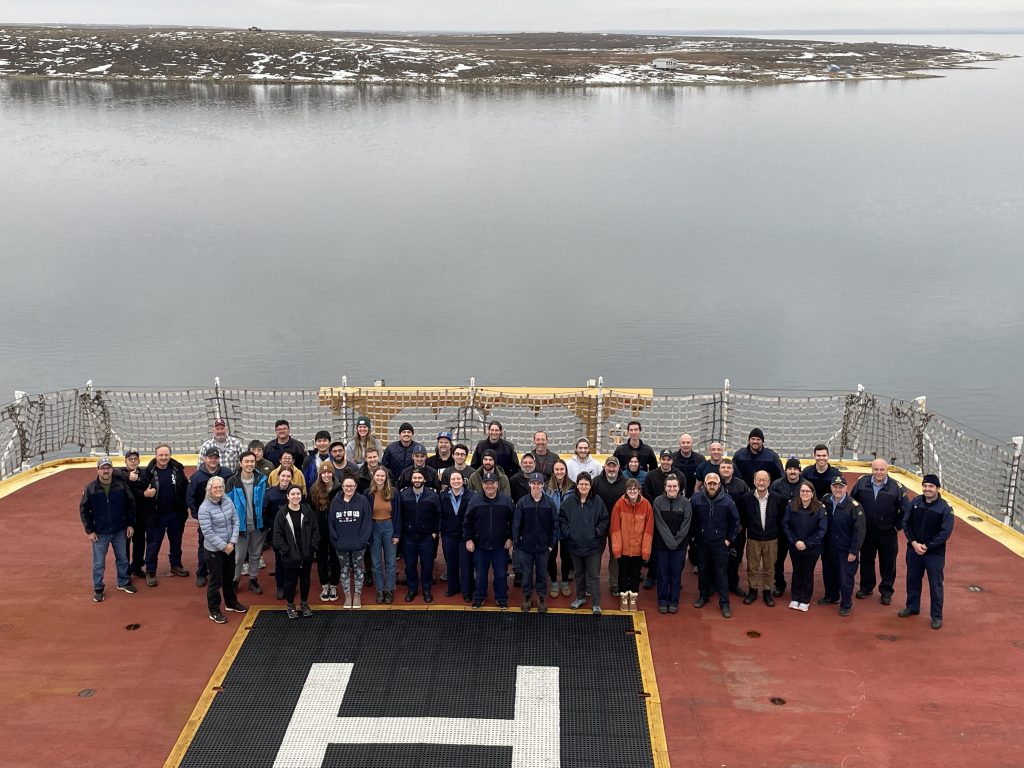Dispatch 27: Closing Time
Ashley Arroyo
October 11, 2023
Dispatch 27: Closing Time
Today is our last full day aboard the Louis for the 2023 JOIS/BGOS expedition. All in all, this year’s cruise was successful and productive in all sorts of ways. We were able to maintain 24-hour operations due to the diligence of our science team and the Canadian Coast Guard crew, resulting in efficient and extensive water sampling and mooring/buoy operations. Throughout the expedition, we completed 55 CTD/rosette and 44 bongo net casts, ranging from as far south as 70°N to as north as 79.5°N.
In terms of water taken from Niskin bottles during those rosette casts, we collected over 7,300 samples for all different properties! Many of these samples were analyzed onboard while some were filtered and/or stored properly (in coolers and freezers) awaiting onshore analysis. For the properties that were measured and analyzed onboard, the analysts on the Louis ran 1318 nutrient, 1231 dissolved oxygen, 594 FDOM, 1362 salt samples and 764 DIC/alkalinity samples. Since these analyses have been completed (because of the hard work of the onboard analysts- kudos to them!), some of us were able to peek at the data which has been interesting! For example, we observed unusually high oxygen concentrations in a subsurface ocean layer near the coast. Other samples have been filtered and frozen in the -80°C freezer for preservation until they can be analyzed onshore. These include 622 chlorophyll samples and samples resulting from 1,600 liters of water for DNA/RNA analysis. Lastly, some of the samples that were collected and preserved for a full onshore analysis in the coming months include 405 bacteria, 825 oxygen isotope samples, and 204 barium samples, 56 uranium/iodine samples, and 897 carbon isotope samples. In addition to these water samples, there were 6 ice cores, and 2 sea ice thickness transects collected on the ice station days!
The buoy/mooring team was also productive in deploying and recovering lots of instruments that will expand our understanding about how the Arctic Ocean works. All three of the BGOS moorings (A, B, and D) were successfully recovered and re-deployed in their respective locations. So far, the data that were recovered from last year’s moorings look interesting - including lots of energetic ocean eddies. In addition to the moorings, the autonomous buoys that were deployed included 3 Ice-Tethered Profilers (ITP), 4 Tethered Ocean Profilers (TOP), 1 Arctic Ocean Flux Buoy (AOFB), 2 Seasonal Ice Mass Balance Buoys (SIMB), and 2 Argo floats. The ITPs and the TOPs have already transmitted 157 and 584 ocean profiles, respectively.
Overall, we had a successful JOIS/BGOS expedition for 2023, which would not have been possible without the hard work of the Louis S. St-Laurent’s Captain and crew! From assisting with science operations, to providing us with meals, and keeping us entertained with activities, we (the science team) would like to say a warm thank you to the Louis S. St-Laurent’s Captain and crew!
We will depart the Louis by helicopter early tomorrow morning, say our goodbyes, and fly home from Cambridge Bay, Nunavut, Canada. Thank you for joining us on our journey through reading the cruise dispatches!
Signing off,
-Ashley
